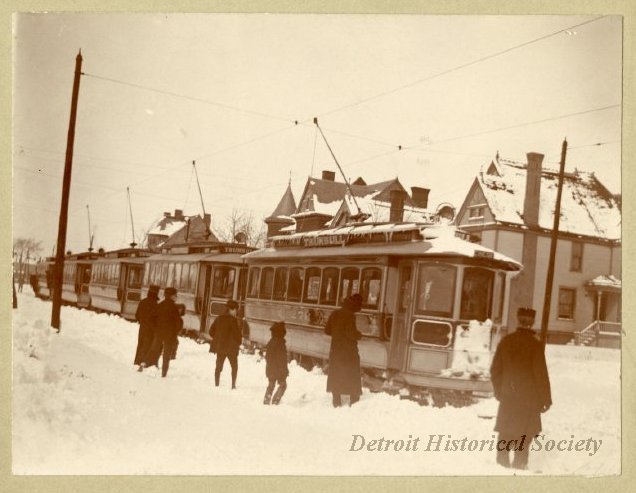
On September 1, 1886, the first electric streetcars to begin operating within the city of Detroit began along Dix Avenue (now known as West Vernor), from 24th Street (where it connected with the Congress and Baker horsecar line)l west to Livernois Avenue (which became the new western city limits in 1885). The line continued west into Springwells Township to Woodmere Cemetery.
This new company, known as the Detroit Electric Railway Company, operated its cars by using an electrical system developed by a Detroit immigrant named Charles J. Van Depoele. The Van Depoele system, which utilized double overhead wires, was capable of pulling a train of up to three cars.
Even though the system operated quite successfully across the country, it met opposition here in Detroit. Public fear, coupled with complaints over the objectionable rumbling noises and electric arching the system initially produced from its overhead connection, prompted the common council — citing irregular service concerns — to order the electric cars withdrawn in 1889. As a result, the city’s first electric line had to be converted into a horsecar line. In 1892, the line would become part of the newly formed Detroit Suburban Railway Company, which was created by consolidating the area’s suburban railway companies.
Around that same time, Detroit’s second electric line began operation on September 18, 1886, after Greenfield Township (along with the city of Detroit) granted a franchise to the Highland Park Railway Company. The line began at the six-mile-line marker within the unincorporated village of Highland Park (just north of what is now Manchester), and operated along the west side of Woodward Avenue, southward through Greenfield Township, across the Detroit border at Pallister Avenue, to the Grand Trunk Railroad crossing just south of Baltimore Avenue in Detroit. There, passengers could make connections with the Woodward horsecar line. This line initially operated utilizing a slotted third rail type system, but was later converted to an overhead trolley operation in 1889.l The line later became part of the Detroit Suburban Railway Company in 1893.
Meanwhile, the technology in the use of overhead electric trolley operation would improve, and despite a reluctance by some, the use of electric power to propel streetcars in Detroit would prevail. On August 22, 1892, the electric streetcars would finally begin on the city-based lines, with electric service beginning on Jefferson Avenue. Conversion to electric power on other lines would eventually follow. The last of the horsecars would be removed in November of 1895.

A little snow won’t stop the electric streetcars (Detroit Historical Society photo, around 1899)
The Streetcar Companies vs. Mayor Pingree (1890—1900), Detroit Transit History, Part Two.
The thirty-year war : a history of Detroit’s streetcars, 1892-1922 / Neil J. Lehto. East Lansing, Michigan : Michigan State University Press, [2017]